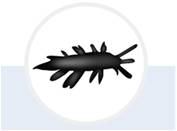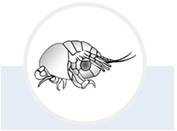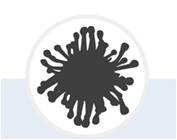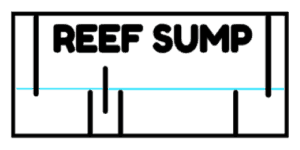
#1 Aiptasia Anemone 
Aiptasia can multiply quickly and can dominate a reef aquarium if not controlled. They pose a threat to livestock by stinging surrounding fish and coral. Agitating aiptasia may cause the release of eggs into the water column, further spreading the infestation. A variety of treatments are available which involve covering or injecting the anemone with a paste-like formula that causes the aiptasia to implode. There is also a tool called the Majano Wand which forces aiptasia to expand from the inside out until they disintegrate. For serious infestations a natural predator such as a Peppermint Shrimp, Copperband Butterfly Fish, or Berghia Nudibranch can also be very effective.
Complete Guide to Getting Rid of Aiptasia in Your Reef Tank
Items to get rid of Aiptasia
Red Sea Aiptasia-X Treatment Kit
Two Little Fishies Julian’s Thing
Joe`s Juice Aiptasia Eliminator
#2 Coral Eating Nudibranchs
Coral eating nudibranchs are one of the most difficult critters to spot in your aquarium. They are very small and often take on the color of the coral they are eating. They reproduce quickly and can decimate both SPS and soft corals, depending on the species. Treatment is tricky since eggs tend to be resistant to coral dips, which are effective on adults. However, you should still dip new corals as a precautionary measure. Physically removing coral-eating nudibranchs may be the best solution. Frequent dipping of infected corals can help starve persistent populations.
#3 Red Bugs 
Red Bugs are small mite-like crustaceans that feed on Acropora coral. In high numbers, they can have serious negative effects on the health of the infested coral. While signs of these critters are not as obvious as flatworms, they are just as pesky and even harder to remove. Dragonface Pipefish are known to prey on red bugs but can be difficult to keep successfully in an aquarium. Currently, the only methods of control are removal and dipping. Using preventative measures like dipping an quarantining new corals is recommended.
#4 Bristle Worms 
Bristle Worms do no pose a direct threat until the population is out of control or they live long enough to grow larger than 4-5”. Smaller worms can actually be helpful by consuming detritus. Larger specimens are known to attack fish, coral and invertebrate. The most effective way to rid you aquarium of bristle worms is to physically remove them. There are specially made Bristle Worm traps you can set, although you may get lucky and be able to grab them using a pair of tongs. Arrow Crabs and various species of Wrasse, Dottyback and Hawkfish have also been reported to prey on Bristle Worms.
#5 Majano Anemone 
Majano Anemones, like Aiptasia, spread quickly and can sting or kill surrounding corals. Many of the injection or chemical solutions for eliminating aiptasia are just as effective on Majano Anemones, which tend to be less resilient and die off quicker when properly treated. The Majano Wand is also an effective means for ridding your tank of Majano anemones.
Red Sea Aiptasia-X Treatment Kit
Two Little Fishies Julian’s Thing
Joe`s Juice Aiptasia Eliminator
#6 Acropora Eating Flatworms
Acropora eating flatworms prey on the flesh of Acropora coral and can decimate your SPS if left uncontrolled. Treating your tank with a chemical flatworm control solution than removing and dipping your Acropora are the best ways to eliminate this pest. Acro eating flatworms are best controlled with chemical treatment, physical removal and/or natural predators. Coral dipping, inspections and quarantine are key to avoiding the introduction of flatworms into your tank.
#7 Rust Brown Flatworms 
Rust Brown Flatworms, also known as Planaria, are the most common species of flatworm seen in the aquarium hobby. They can quickly take over your aquarium if not controlled. They tend to become a problem in aquariums with elevated waste. They can become so populous that they’ll perch on corals, blocking light and inhibiting photosynthesis. Chemical treatment with a product like Salifert Flatworm Exit coupled with physical removal via siphon is one of the best ways to remove flatworms. Natural predators like Wrasses or Dragonets, are another options. Dipping and quarantining new corals before placing them into your display is a great preventative approach that will help avoid introducing these pests into your tank in the first place.
#8 Asterina Starfish 
Asterina Starfish are the most common reef aquarium pest. They usually hitchhike on live rock into newly established tanks. A number of species have been discovered in reef aquariums and they reproduce quickly via fragmentation. Most species feed on detritus and do not pose a threat although others have reported to feed on colonial polyps and other soft corals. The easiest way to get rid of asterina starfish is physical removal. They range from 1/4” to 1” in size, so they are fairly easy to grab with tweezers or tongs. Harlequin Shrimp are a beautiful and effective natural predator. However, since asterina starfish are the harlequin’s sole food source, you should only introduce on to your tank if you enough asterina to sustain the shrimp long-terms.
Blue Ocean Corals Coral Rx Concentrate Dip PRO Aquarium Treatment
Coral Rx was designed with the health of your corals in mind. The proprietary blend of natural ingredients contains no iodine, which is known to stain corals, nor does Coral Rx contain oxidizers whose by-products are often toxic.
Fish Pharm Red Sea Aiptasia-X Eliminator Kit
Eliminate Aiptasia with Aiptasia-X. In an exciting development for reef-keepers Red Sea has developed a unique patent pending formula to treat the pest anemones Aiptasia sp., Anemonia majano and Boloceroides sp.


